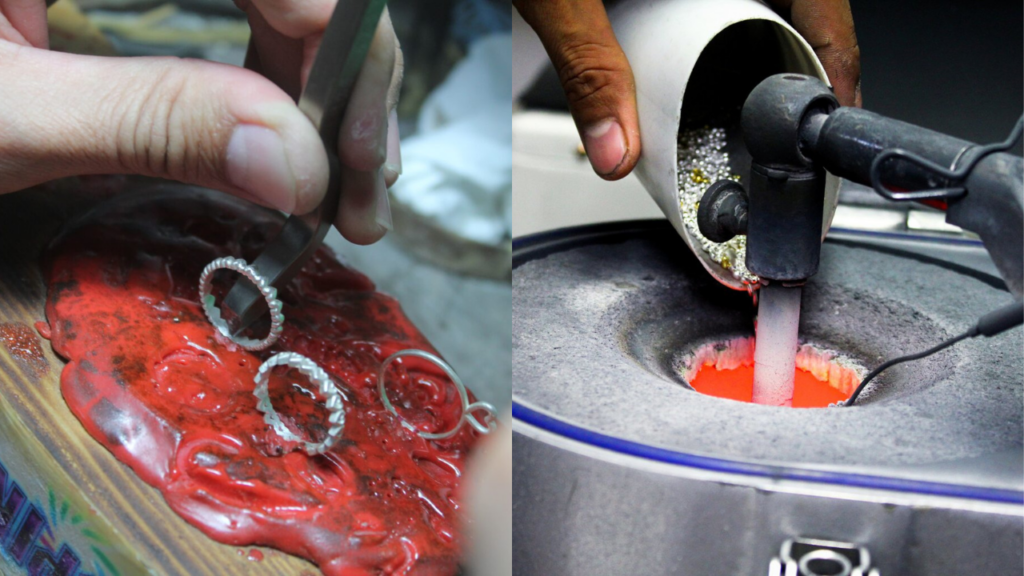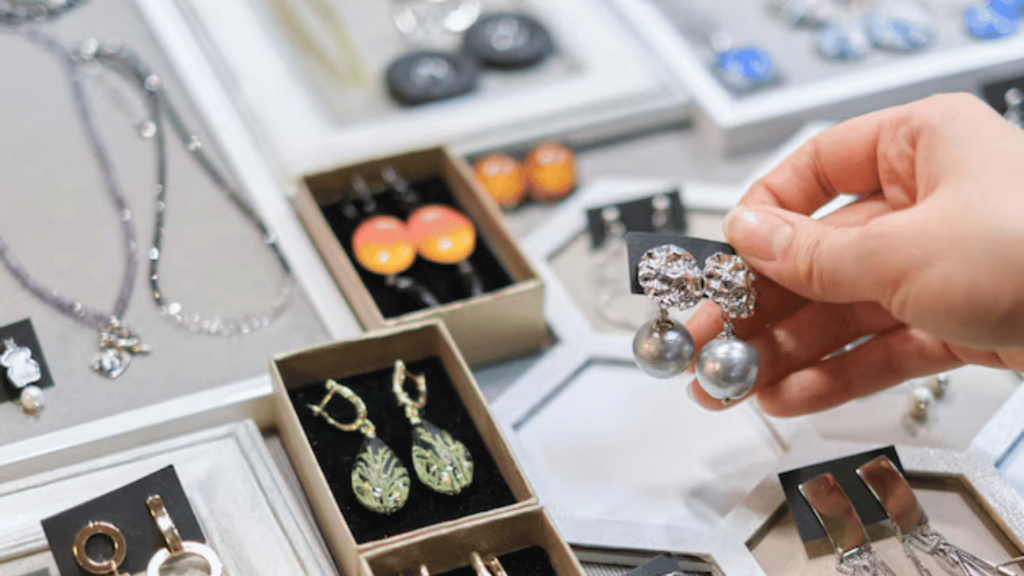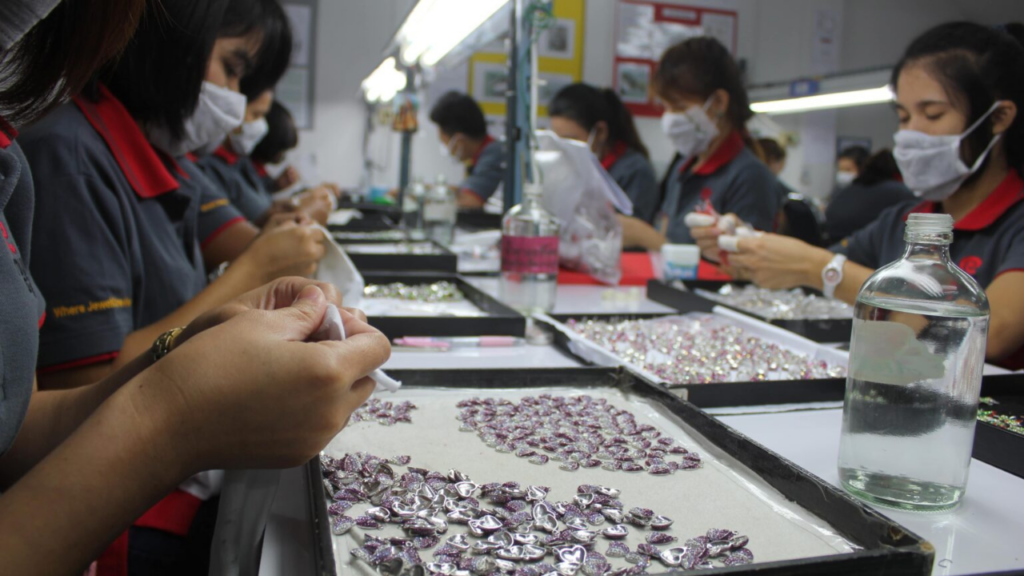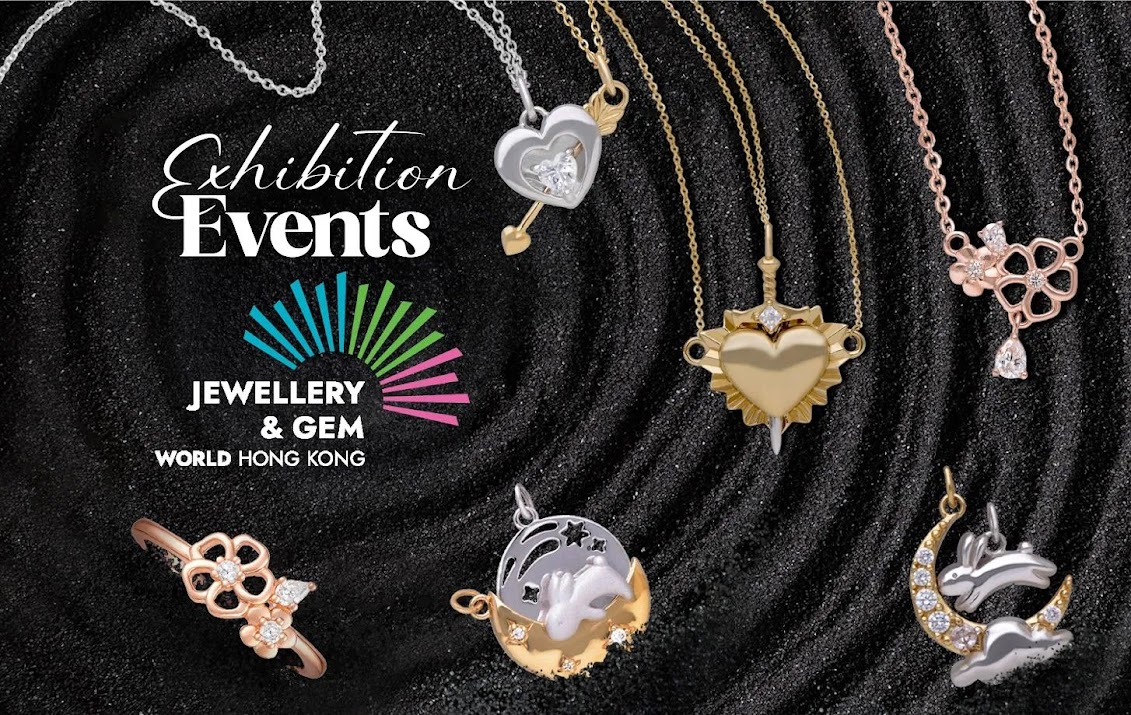The jewelry market is undergoing a profound transformation, driven by the emergence of Millennials and Generation Z as dominant consumer forces. These younger generations are not just seeking beautiful adornments; they are demanding products that align with their deeply held values. Unlike their predecessors, whose purchasing decisions might have been primarily influenced by aesthetics, price, or brand prestige alone, Millennials and Gen Z are critically evaluating the entire lifecycle of a product.
For jewelry brands aiming to capture the attention and loyalty of these discerning consumers, merely offering dazzling designs is no longer sufficient. Embracing authentic sustainability, ethical sourcing, and radical transparency in every facet of production has become not just a competitive advantage but an absolute prerequisite for relevance and resonance. This article explores the compelling reasons why sustainability is the cornerstone for success when targeting the Millennial and Gen Z jewelry market.
Jewelry for Millennials & Gen Z: Why Sustainability is Key
I. Understanding the Millennial and Gen Z Mindset
To effectively connect with these pivotal demographic groups, it’s crucial to grasp the core tenets of their consumer philosophy. Their purchasing behaviors are shaped by a unique blend of idealism, pragmatism, and digital fluency.
1. Ethical Consumerism as a Guiding Principle
Millennials and Gen Z are, by nature, highly conscious consumers. They are acutely aware of the environmental footprint and social implications of industries worldwide, and the jewelry sector is no exception.
– Values-Driven Purchases: For these generations, a purchase is often an extension of their ethics. They actively seek out and support brands that demonstrably align with their convictions regarding environmental protection, human rights, and social equity. They want to wear jewelry that tells a positive story, not one fraught with exploitation or ecological damage.
– Impact Awareness: They are not just interested in the final product; they want to understand the journey it took to get there. Questions about carbon emissions, water usage, and land degradation related to material extraction are increasingly part of their decision-making process.
2. The Demand for Unwavering Transparency
Digital natives, as they are, Millennials and Gen Z are adept at seeking out information and are inherently distrustful of opacity. They expect brands to be open and honest, not just about marketing claims but about the realities of their operations.
– Supply Chain Visibility: They desire clear, verifiable information about where materials come from, how they are processed, and the conditions under which the jewelry is made. Ambiguity or vague assurances are often met with skepticism.
– Authenticity Over Hype: Generic marketing messages no longer suffice. These consumers crave authenticity, and transparency serves as tangible proof of a brand’s integrity. They are quick to call out “greenwashing” – misleading claims of environmental friendliness – if a brand’s practices don’t match its promises.
3. Prioritization of Personalization and Meaning
Beyond ethical considerations, these generations are drawn to items that resonate with their identity and tell a unique story.
– Self-Expression: Jewelry is viewed as a form of self-expression. They gravitate towards pieces that are unique, can be customized, or hold symbolic meaning, reflecting their narrative rather than just status.
– Longevity and Value: While not necessarily seeking expensive items, they value quality that lasts and items that can be cherished. They seek pieces that feel personal and can be integrated into their everyday lives, often with a preference for versatile designs that transcend fleeting trends.
4. Appreciation for Minimalism and Versatility
Their aesthetic preferences often lean towards understated elegance and practicality.
– Less is More: Many Millennials and Gen Z embrace a minimalist aesthetic, preferring fewer, higher-quality items that can be worn in various settings and layered with other pieces.
– Everyday Luxury: They seek jewelry that is comfortable and durable enough for daily wear, blurring the lines between special occasion pieces and everyday staples. This preference for versatility reinforces the desire for items with lasting value.
II. The Key Elements of Sustainable Jewelry Production
To meet the expectations of Millennials and Gen Z, jewelry brands must embed sustainability deep into their core operational philosophy. This goes beyond a single initiative and encompasses a holistic approach to responsible production.
1. Ethically Sourced Materials
The origin of raw materials is often the first point of scrutiny for conscious consumers.
– Conflict-Free Assurances: This specifically addresses diamonds and gemstones, ensuring they are not mined or traded to fund armed conflict. Robust due diligence and chain-of-custody protocols are essential.
– Fair Mining Practices: Beyond conflict, it encompasses ensuring fair wages, safe working conditions, and minimal environmental damage at the source of all raw materials, including precious metals. This supports local communities and protects ecosystems.
2. Utilizing Recycled and Reclaimed Metals
Reducing reliance on newly mined resources is a cornerstone of environmental responsibility.
– Reduced Environmental Impact: Repurposing gold, silver, platinum, and palladium from discarded jewelry, industrial waste, or electronics significantly lessens the need for destructive mining practices, which contribute to deforestation, habitat destruction, and water pollution.
– Circular Economy Principles: This practice aligns with the circular economy model, where resources are kept in use for as long as possible, extracting maximum value from them before recovery and regeneration.
3. Embracing Lab-Grown Diamonds and Gemstones
Technological advancements offer sustainable alternatives to traditionally mined stones.
– Lower Environmental Footprint: Lab-grown diamonds and many lab-created gemstones have a significantly smaller carbon footprint, consume less water, and require less land disruption compared to their mined counterparts.
– Ethical Purity: They offer an inherently conflict-free option, removing any concerns about human rights abuses or exploitative labor often associated with traditional mining. They provide a modern, innovative, and ethical choice without compromising on brilliance or quality.
4. Implementing Fair Labor Practices
Ethical production extends beyond environmental concerns to the human element of the supply chain.
– Safe and Respectful Workplaces: Ensuring that all individuals involved in the crafting process, from cutters to polishers and assemblers, work in safe, healthy, and respectful environments.
– Living Wages and Benefits: Providing fair wages that allow workers to meet their basic needs and offer benefits that contribute to their well-being, going beyond mere minimum wage requirements. This also includes prohibiting child labor and forced labor.
5. Cultivating Radical Transparency
Openness about the entire production journey builds invaluable trust.
– Detailed Traceability: Being able to trace every component of a piece of jewelry back to its origin, and being willing to share that information with customers. This might involve unique IDs for stones or blockchain-verified supply chains.
– Open Communication: Brands should be proactive in communicating their sustainability efforts, challenges, and continuous improvement goals. This includes clear labeling, accessible information on websites, and responsive customer service.
6. Pursuing Credible Certifications and Audits
Independent verification lends legitimacy to sustainability claims.
– Third-Party Validation: Collaborating with recognized organizations that conduct independent audits and provide certifications (e.g., Responsible Jewellery Council (RJC), Fairmined, SCS Global Services) provides objective proof of adherence to ethical and environmental standards.
– Building Consumer Trust: These certifications serve as powerful trust signals for consumers, cutting through marketing noise and assuring them that a brand’s sustainability claims are genuine.
III. Sustainable Jewelry Trends Resonating with Younger Consumers
The confluence of Millennial and Gen Z values with sustainable practices has given rise to distinct trends in the jewelry market.
A. The Appeal of Recycled and Vintage Jewelry:
– Circular Economy Alignment: Younger consumers appreciate the “new life” given to materials through recycling or the inherent sustainability of buying pre-owned pieces, directly contributing to a circular economy and reducing new resource extraction.
– Unique Story: Vintage or antique pieces often carry a unique history, adding a layer of storytelling that appeals to their desire for individuality and meaning.
B. The Rise of Lab-Grown Diamonds and Gemstones:
– Ethical Purity: These provide a compelling option for those who want the brilliance of diamonds without the ethical or environmental concerns sometimes associated with traditional mining.
– Innovation and Modernity: For technologically savvy generations, the scientific innovation behind lab-grown stones is often seen as a modern and progressive choice.
C. Emphasis on Minimalist and Versatile Designs:
– Conscious Consumption: Simple, elegant pieces that can be worn daily and layered appeal to a desire for intentional, less wasteful consumption. They prioritize quality and longevity over fleeting trends.
– Personalization: Minimalist designs often serve as a perfect canvas for personalization through engraving, birthstones, or unique stacking combinations, allowing individual expression within a sustainable framework.
D. Focus on Storytelling and Transparency in Design:
Brands are increasingly incorporating the narrative of their sustainable practices directly into their designs or marketing. This could involve highlighting the origin of a specific gemstone or the story of the artisans involved in its creation.
IV. Royi Sal Jewelry: Our Commitment to Responsible Manufacturing
At Royi Sal Jewelry, we are a prominent sterling silver jewelry manufacturer, and we understand the evolving demands of the jewelry market. We recognize that today’s conscious consumers, particularly Millennials and Gen Z, are not just looking for beautiful designs, but for products crafted with responsibility. Our operational philosophy deeply addresses this critical demand for ethical and sustainable practices within the industry.
We uphold our commitment to responsible manufacturing through several key areas:
1. Established Processes and Uncompromising Quality Control: We believe that true responsibility begins with a systematic and meticulous approach to production. This is why we emphasize rigorous quality control at every stage of our manufacturing process. Our well-managed and controlled manufacturing processes inherently contribute to less waste, greater efficiency, and a reduced environmental footprint. Our two decades of experience have allowed us to maturely understand efficient and responsible production.
2. Ethical Sourcing & Labor Practices (Our Foundation): As a major manufacturer, our capabilities span from initial design to the finished product. Maintaining long-term relationships with global brands necessitates our adherence to international labor standards and ethical sourcing practices. This is a fundamental requirement for us, even if it’s not always explicitly branded for the end consumer. Our commitment to offering a complete manufacturing solution means we take responsibility for the entire production chain. Serving a global market ensures our operations consistently align with diverse ethical standards.
3. Focus on Silver: A Recyclable Material at Our Core: Our specialization in sterling silver is a deliberate choice that aligns with sustainable principles. Silver is a highly recyclable precious metal, and by focusing on this material, we inherently contribute to a more circular economy within the jewelry industry. This reduces the demand for newly mined resources. Our expertise in silver manufacturing strategically positions us to adopt and scale such practices.
4. Partnership and Reliability: Enabling Sustainable Choices: For brands looking to offer sustainable options to Millennials and Gen Z, partnering with a reliable manufacturer like Royi Sal is crucial. When brands choose to collaborate with us, they can leverage our manufacturing capabilities with confidence, knowing that our production adheres to established quality and evolving ethical standards. This partnership empowers smaller brands, or those without extensive in-house production, to offer products manufactured with a significant degree of responsibility.
5. Diversified Collections and Versatility: Designing for Longevity: Our extensive jewelry collections, ranging from timeless classics to contemporary designs, offer significant versatility. This directly aligns with the Millennial and Gen Z preference for pieces that are not just beautiful, but also durable, versatile, and can be worn daily and layered. By offering such a wide array of designs, we enable brands to curate collections that cater to minimalist aesthetics and personalized expression, ultimately reducing the need for constant new purchases driven by fleeting trends.
In the broader context of sustainability for Millennials and Gen Z, Royi Sal Jewelry serves as an important behind-the-scenes enabler. We believe that by prioritizing process efficiency, ensuring rigorous quality control, and strategically utilizing recyclable materials, we contribute significantly to the overall sustainability of the jewelry ecosystem, thereby supporting the values of younger generations. For brands aiming to meet the demands of these conscious consumers, choosing manufacturing partners like Royi Sal, who demonstrate a genuine commitment to responsible production, is a strategic move that benefits everyone involved.
Conclusion: The Sustainable Future of Jewelry – Partnering for a Brighter Shine
For jewelry brands seeking to genuinely connect with and capture the loyalty of Millennials and Gen Z, sustainability is not merely a marketing angle—it is a foundational value that underpins every purchasing decision. By authentically embracing ethical sourcing, prioritizing transparency across the entire supply chain, and innovatively incorporating sustainable materials and production methods, brands can build more than just a customer base; they can cultivate a community of engaged, trust-filled advocates. This commitment to a more responsible industry not only aligns with the deep-seated values of younger consumers but also paves the way for a more resilient, respected, and ultimately, more brilliant future for the entire jewelry sector. The sparkle that truly captivates these generations shines with a clear conscience.
In this pivotal shift towards conscious consumerism, Royi Sal Jewelry stands as a crucial partner for brands dedicated to genuine sustainability. Our commitment to responsible manufacturing, efficient processes, ethical labor practices, and the strategic use of recyclable materials like sterling silver directly supports the values that Millennials and Gen Z demand. We enable brands to offer jewelry that not only delights aesthetically but also upholds the highest standards of integrity and environmental care.
Are you a jewelry brand looking to align your collections with the ethical and sustainable expectations of today’s discerning consumers? Partner with Royi Sal Jewelry. Leverage our two decades of expertise and our dedication to responsible production to craft pieces that resonate deeply with your target audience. We invite you to explore how our manufacturing capabilities can help you meet the growing demand for truly conscious jewelry.
Contact Royi Sal Jewelry today for inquiries and partnership opportunities. Let’s collaborate to create a more sustainable and brilliant future for the jewelry industry, together.
Share this post








Responses (0)